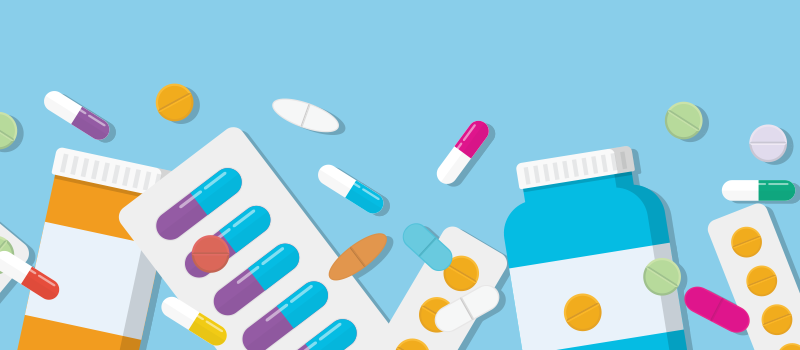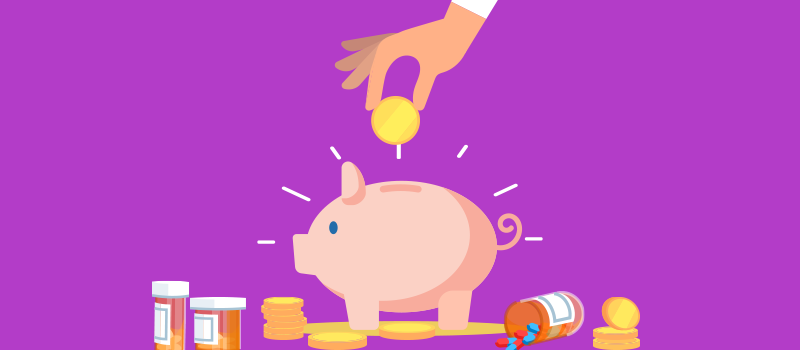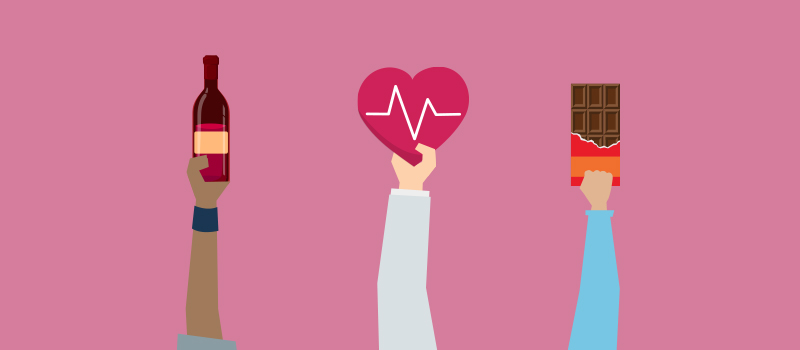Non-Statin Cholesterol Treatment: Ezetimibe

Key highlights for non-statin therapy ezetimibe
- Ezetimibe is one of the non-statin medications used to lower high cholesterol levels, in addition to lifestyle modifications with a healthy diet and regular exercise. Zetia is the brand name version of ezetimibe.
- Ezetimibe is one of the first-line options for people who can’t tolerate statin medications or need additional therapy to achieve their cholesterol level goals.
- Ezetimibe can be used alone or as part of combination therapy to treat high cholesterol.
What is cholesterol?
Cholesterol is a natural waxy lipid (fat) made by the liver. Despite the common misunderstanding that cholesterol is responsible for cardiovascular disease, you should remember that cholesterol alone is not intrinsically bad for you.
Cholesterol is essential for many vital tasks, including cell formation and producing different vitamins, including vitamin D. In addition to cholesterol, triglycerides are another type of waxy fat produced by the liver and intestines. However, too much cholesterol can lead to serious cardiovascular health problems because your body can’t use the excess lipids. These extra lipids can form fatty deposits or plaque in the blood.
An important fact to remember is that there are multiple types of lipids. Please continue reading to learn about cholesterol numbers, which will help you to understand lipid panels.
What are LDL cholesterol and HDL cholesterol?
Cholesterol is a waxy, fatty substance. The term cholesterol often has a negative connotation as high blood cholesterol levels are associated with coronary heart disease, leading to a high risk of heart attacks and stroke.
Cholesterol and triglycerides cannot travel in the bloodstream because water and oil don’t mix. Lipoproteins, which are produced by the liver, consist of proteins and fat. Lipoproteins are what carry cholesterol and triglycerides through the bloodstream to different cells in the body.
Low-density lipoprotein (LDL) and high-density lipoprotein (HDL) are the two major types of lipoprotein that are important to understand when it comes to high cholesterol and cholesterol numbers.
Low-density lipoprotein (LDL) is called LDL cholesterol or simply LDL/LDL-C (low-density lipoprotein-cholesterol levels). Similarly, HDL cholesterol or HDL is carried by the high-density lipoprotein. These are sometimes referred to as “good cholesterol” (HDL) and “bad cholesterol” (LDL).
The high-density lipoprotein, or HDL, is the “good cholesterol." To remember more easily, think of “H” in HDL as “healthy.” HDLs carry the cholesterol from the bloodstream to your liver to maintain essential bodily functions.
Low-density lipoprotein, or LDL cholesterol, is the “bad cholesterol.” Low HDLs mean an excessive amount of cholesterol remains in your bloodstream. When this happens, more cholesterol circulates in the blood, leading to a high risk of acute coronary syndrome, such as heart attacks, atherosclerotic cardiovascular disease (ASCVD), or atherosclerosis. Meanwhile, the liver does not have enough cholesterol to support the synthesis of vitamin D, steroid hormones, and sex hormones.
Depending on your age and assigned sex at birth, your HDL and LDL cholesterol, and total cholesterol may differ. If you have heart disease or are at high risk for certain conditions, your goal for LDL cholesterol may be more stringent.
Below are the normal cholesterol levels in mg/dL for adults 20 years and older without elevated risk for heart disease.
Male at birth:
- Total cholesterol: 125 to 200
- HDL cholesterol: 40 or higher
- LDL cholesterol: less than 100
- Non-HDL cholesterol: less than 130
Female at birth:
- Total cholesterol: 125 to 200
- HDL cholesterol: 50 or higher
- LDL cholesterol: less than 100
- Non-HDL cholesterol: less than 130
Why does high LDL cholesterol put you at high risk of coronary heart disease?
High cholesterol can result in plaque buildup inside the arteries. This condition is called atherosclerotic cardiovascular disease (ASCVD).
Atherosclerotic cardiovascular disease can be a silent killer since symptoms will not become apparent until an artery is very narrow and the blood supply to organs is compromised.
When atherosclerotic cardiovascular disease affects the coronary arteries, coronary artery disease (CAD) or coronary heart disease (CHD) occurs. Coronary arteries supply blood to your heart, which cannot function without a proper supply of blood. Coronary heart disease is the leading cause of myocardial infarction (heart attack) and heart failure.
Atherosclerotic cardiovascular disease can also affect blood vessels of the brain or kidneys, leading to stroke and kidney failure.
Is statin therapy effective in lowering LDL cholesterol levels?
Statins are a common drug class used to lower cholesterol. This class of cholesterol medicines is classified as the HMG-CoA reductase inhibitors because they block an enzyme called HMG-CoA reductase in the liver. HMG-CoA reductase is the key enzyme of the mevalonate pathway that produces cholesterol. Inhibition of this enzyme decreases cholesterol biosynthesis in the liver.
Statin therapy can effectively lower LDL cholesterol, reducing your risk of atherosclerotic cardiovascular disease. People with certain other medical conditions and lifestyle factors can also benefit from statin therapy.
For instance, the 2018 American College of Cardiology and American Heart Association guidelines recommend statin therapy for patients with existing ASCVD; examples include a history of stroke, heart attacks, and angina (chest pain). Statin therapy is also recommended to lower LDL cholesterol in people with diabetes at high risk of developing major cardiovascular events.
Your healthcare provider can calculate your 10-year ASCVD risk using your age, assigned sex at birth, smoking status, cholesterol levels, diabetes, and high blood pressure status.
Which one is better for me, statin or non-statin medications?
Statin monotherapy is FDA-approved to lower LDL cholesterol and is typically the first choice of medicine prescribed to reduce LDL cholesterol. However, statin monotherapy is not always the best choice for everyone. Statin intolerance is one of the main reasons many people look for non-statin drugs to reduce LDL cholesterol.
Sometimes statin therapy alone is not enough to meet the goals of LDL-C levels. In addition to the population of statin-intolerant patients, some people would need a non-statin medication combined with a statin to lower LDL-C levels. Therefore, there is yet to be a definite answer regarding which one is better to lower LDL cholesterol and reduce the risk of cardiovascular events.
In summary, your healthcare provider’s decision to put you on one of the non-statin therapies is based on the following factors:
- Statin intolerance: Statin-intolerant patients cannot handle some of the side effects caused by statin medications, such as muscle pain due to statin-associated muscle symptoms.
- Intolerance of high-dose statins: Some people use low-dose statins because they can’t tolerate the side effects of high-dose statins. Adding one non-statin therapy can help meet the LDL-C lowering goals.
- LDL-C lowering goal not met: In cases where blood cholesterol levels, including triglycerides and LDL cholesterol, are still high with a statin, adding a non-statin therapy may be considered.
- Pregnancy: Statin medication can affect an unborn baby. Therefore, non-statin therapy is a safer choice for pregnant women.
- Lifestyle: Other factors, such as smoking status and a family history of high cholesterol.
What are non-statin therapies to lower cholesterol?
Many non-statin medications work to control your cholesterol levels.
Aside from the cholesterol absorption inhibitor, ezetimibe, some other non-statin therapy options that may help when discussing treatment options with your doctor are listed below. Keep in mind that all cholesterol-lowering medications should be used in addition to lifestyle changes, including healthy diets and exercise.
Ezetimibe
Ezetimibe is classified as a cholesterol absorption inhibitor that lowers cholesterol levels in your liver and blood. It is a once-daily dosing oral medication available as a generic medicine.
PCSK9 inhibitors
Examples of PCSK9 inhibitors are alirocumab (Praluent) and evolocumab (Repatha). PCSK9 inhibitors are monoclonal antibodies injected subcutaneously (under the skin) every 2 weeks. PCSK9 inhibitors block the enzyme PCSK9 from breaking down LDL receptors, ultimately increasing the number of LDL receptors in your liver cells. By helping LDL receptors work more efficiently, this drug class removes LDL cholesterol from the blood.
Bempedoic acid
Bempedoic acid belongs to a drug class called ATP citrate lyase (ACL) inhibitors. This oral medication is reserved for inadequate response to ezetimibe with or without PCSK9 inhibitors. Bempedoic acid lowers cholesterol synthesis in the liver and lowers LDL-C in blood similarly to PCSK9 inhibitors by increasing LDL receptors on your liver cells, promoting clearance of LDL-C from the blood, and lowering LDL levels. Bempedoic acid is FDA-approved for ASCVD in combination with other medications. Bampedoic acid is also used for familial hypercholesterolemia.
Bile acid sequestrants
Bile acid sequestrants, also known as bile acid binding resins, bind to bile acids, reducing cholesterol absorption in the small intestine. Examples of bile acid binding resins are cholestyramine (Prevalite), colestipol (Colestid), and colesevelam (Welchol). Bile acid-binding resins are available as oral medications.
LDL-apheresis
LDL-apheresis removes apo B-containing lipoproteins resulting in a significant reduction in LDL cholesterol. LDL-apheresis is similar to dialysis, where a needle is placed in your arm, and your blood enters a plasma separator filter, which removes LDL cholesterol from the blood.
Other non-statin therapies
Examples of other non-statin therapies used to lower cholesterol include omega-3 fatty acids like Lovaza, fibrates like gemfibrozil (Lopid), and small interfering RNAs (siRNAs) such as inclisiran (Leqvio).
Non-statin therapy: Ezetimibe facts
Ezetimibe dosage forms
- Ezetimibe (brand name medication Zetia) is available as a 10 mg (milligrams) oral tablet with a doctor’s prescription.
- Ezetimibe is also available as an ingredient of a combination medication called Vytorin, which contains simvastatin and ezetimibe.
What is ezetimibe used for?
Ezetimibe is used to lower cholesterol in certain people with high cholesterol levels.
Clinical trials have shown the efficacy of ezetimibe (Zetia) as monotherapy (used alone) or in combination with a statin medication to treat the following conditions:
- Primary hyperlipidemia
- Mixed hyperlipidemia
- Familial hypercholesterolemia
- Homozygous sitosterolemia
IMPROVE-IT (Improved Reduction of Outcomes: Vytorin Efficacy International Trial) is a clinical trial showing the benefit of adding ezetimibe to statin therapy to further reduce cardiovascular events in patients after acute coronary syndrome in both men and women.
How does ezetimibe work?
Ezetimibe is classified as a cholesterol absorption inhibitor. It works by inhibiting the activity of the NPC1L1 protein, in turn preventing cholesterol absorption in the small intestine.
This drug information about ezetimibe, a non-statin therapy, is for educational purposes only and may not include all possible indications, adverse effects, drug interaction, and potential warnings.
Instructions for taking ezetimibe
What if I miss a dose?
If you miss a dose, take it as soon as you remember. However, if it is almost time for your next dose, take only that dose and skip the missed dose. Do not take twice the amount to make up for the missed dose.
Should I be taking ezetimibe with food?
Ezetimibe is taken once daily with or without food.
Can I cut or crush ezetimibe?
Yes. You can break, cut, or crush ezetimibe tablets.
What to watch out for when taking ezetimibe with other medications?
Like any medicine, ezetimibe can interact with other medications and vice versa. When drug interactions happen, they can affect the blood tests that evaluate blood levels of other drugs, which can lead to worsening side effects or cause other drugs to be less effective.
Ezetimibe can be taken at the same time as a statin or fenofibrate. However, if you are using ezetimibe with bile acid sequestrants (bile acid-binding resins), such as cholestyramine, colestipol, or colesevelam, you should take ezetimibe at least 2 hours before or 4 hours after taking a bile acid sequestrant to prevent drug-drug interactions.
Ezetimibe can interact with many other drugs. Tell your doctor if you are currently taking the following medications:
- Blood thinner such as warfarin (Coumadin, Jantoven)
- Cyclosporine
- Gemfibrozil
- Fenofibric acid
To prevent unwanted drug interactions, tell your doctor about other drugs you are currently taking, including other prescription medications, over-the-counter products, and herbal or dietary supplements. You should talk to your doctor or pharmacist about other interactions that may occur while being on ezetimibe.
Important warning for ezetimibe
Contraindications
Vytorin (ezetimibe/simvastatin) is contraindicated in people with active liver disease.
Pregnancy/Lactation
Pregnant women should discuss with healthcare providers the risks and benefits of using ezetimibe during pregnancy since there is not enough data to support the safety and efficacy of ezetimibe for the fetus.
Nursing mothers should not use any combination drug therapy with a statin because statins may pass into breast milk.
What are the side effects of ezetimibe?
Common side effects of ezetimibe include the following:
- Diarrhea
- Joint pain
- Sneezing, sore throat, stuffiness, and other cold symptoms
- Muscle pain if using ezetimibe with a statin
Call your doctor if you experience the following more serious side effects:
- Rhabdomyolysis (breakdown of muscle tissue): this is a rare side effect, though it can cause kidney damage leading to chronic kidney disease if left untreated.
- Liver damage: this risk is higher if taken with a statin. Tell your doctor if you have stomach pain, dark urine, nausea, vomiting, fatigue, and jaundice (yellowing of the eyes or skin).
- Anaphylactic allergic reaction causing hives, rash, shortness of breath, and swelling of the face, tongue, or throat.
Call your doctor or local poison control center if you think you’ve taken more than the usual dose. If the symptoms are severe, get emergency medical help at the nearest emergency department.
References
- https://www.heart.org/en/health-topics/cholesterol/causes-of-high-cholesterol
- https://www.heart.org/en/health-topics/cholesterol/about-cholesterol
- https://www.cdc.gov/cholesterol/index.htm
- https://www.nhlbi.nih.gov/files/docs/public/heart/wyntk.pdf
- https://www.ncbi.nlm.nih.gov/pmc/articles/PMC7916166/#:~:text=Cholecalciferol%2C%20the%20form%20of%20vitamin,of%20cholesterol%20in%20human%20cells
- https://www.ncbi.nlm.nih.gov/pmc/articles/PMC6581675/#:~:text=Cortisol%20levels%20are%20under%20the,density%20lipoproteins%20(HDL)%20cholesterol
- https://www.ncbi.nlm.nih.gov/pmc/articles/PMC4600502/
- https://pubmed.ncbi.nlm.nih.gov/19061694/
- https://www.ahajournals.org/doi/10.1161/JAHA.117.006901#:~:text=Background-,IMPROVE%20%E2%80%90%20IT%20(Improved%20Reduction%20of%20Outcomes%3A%20Vytorin%20Efficacy%20International,after%20an%20acute%20coronary%20syndrome
- https://www.accessdata.fda.gov/drugsatfda_docs/label/2008/021445s019lbl.pdf












SOCIAL